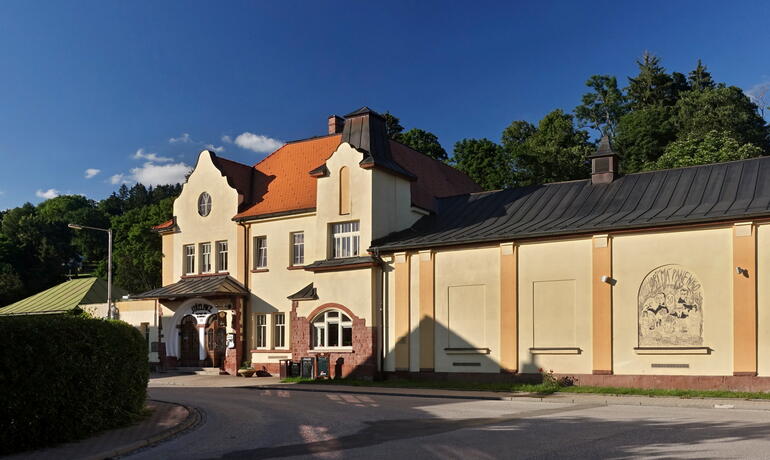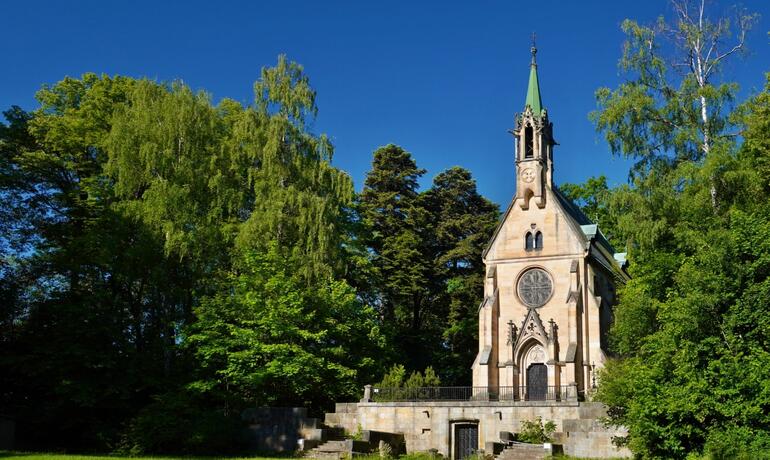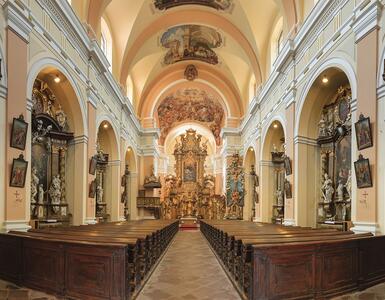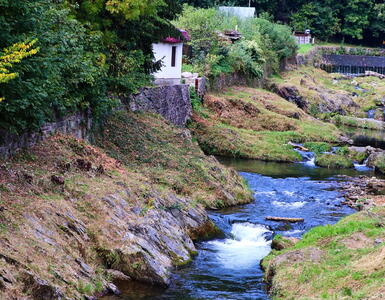Chapels in Vrchlabí
Small sacred monuments are an integral part of the Krkonoše landscape and add to its charm. There are also many chapels and shrines scattered around the town of Vrchlabí, each with its own unique atmosphere. Thanks to the initiative of the Zdravé Krkonoše civic association (www.zdravekrkonose.eu), many of them have been restored or repaired and are well worth a visit. Discover them on a pleasant seven-kilometer walk that will take you through the town, the castle park, and the fallow deer enclosure.
TGM Square and the Baroque Town Hall
The town hall, built in 1737, is the seat of the municipal office and the information center.
Palace

The Renaissance palace which replaced the former Gothic moated fort was completed in 1546 as the seat of Krystof Gendorf of Gendorf. An unknown architect used the layout of an Italian castello (small fortress or stronghold). The building, originally surrounded by a 12m wide moat and accessible by three bridges.
Czernin-Morzin Palace Chapel

The palace chapel, situated at the edge of the palace park and accessible originally via a wooden suspension bridge and today from Dobrovskeho St., was built by Countess Aloysia Czernin-Morzin, the daughter of Rudolf Morzin.
Chapel of the Holy Trinity
The chapel is estimated to be 150–200 years old. It was renovated in 2000. The interior of the chapel is decorated with a wooden altarpiece depicting the Holy Trinity, designed and created by woodcarver Petr Kysela.
Chapel of the Virgin Mary on Calvary
It dates from the second half of the 19th century, and its restoration began in 2010. The design is based on its original historical appearance, incorporating elements of contemporary architectural expression.
House with Seven Gables

One of the oldest private houses in Vrchlabi, it looks like a rural chalet adapted to life in the town.
Strelnice Culture Centre

This culture centre, especially its main hall, was made famous in 1967 by the globally acclaimed movie director Milos Forman, who chose it as the setting for his famous movie “Hori, ma panenko” (known as The Firemen’s Ball). This bitter comedy, depicting a peculiar ball for firemen, was nominated for an Oscar in 1968. Milos Forman successfully revealed the roots of human nature, and the movie gives a certain distorted-mirror view of late-1960s Czech society.
Church of St. Lawrence

This church was built in the Neo-Gothic style by a local builder, Eduard Zirm, on the site of a 14th century single-nave Gothic church, following a project by architect Stephan Tragl of Prague. The construction took place in 1886–1889.






